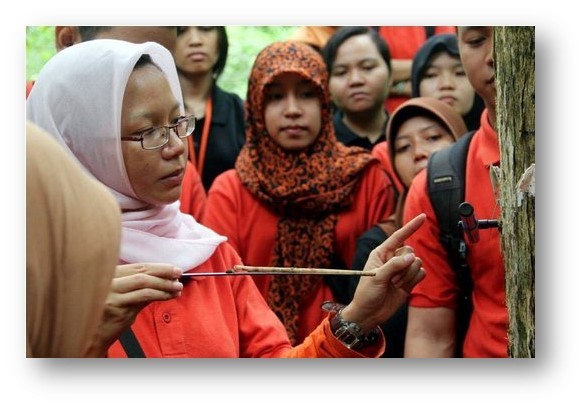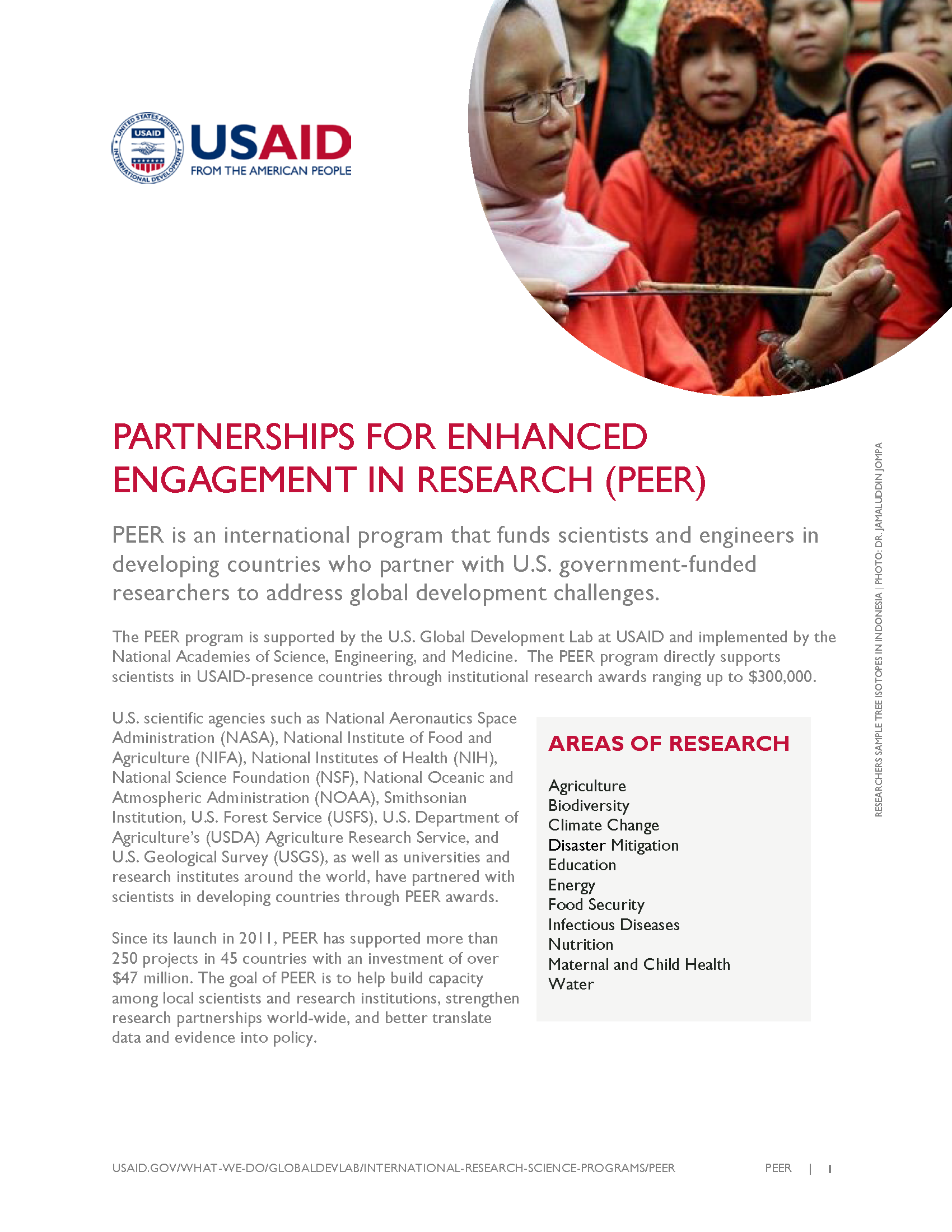
PEER is an international program that funds scientists and engineers in developing countries who partner with U.S. government-funded researchers to address global development challenges.
The PEER program is supported by the U.S. Global Development Lab at USAID and implemented by the National Academies of Science, Engineering, and Medicine. The PEER program directly supports scientists in USAID-presence countries through institutional research awards ranging up to $300,000.
U.S. scientific agencies such as National Aeronautics Space Administration (NASA), National Institute of Food and Agriculture (NIFA), National Institutes of Health (NIH), National Science Foundation (NSF), National Oceanic and Atmospheric Administration (NOAA), Smithsonian Institution, U.S. Forest Service (USFS), U.S. Department of Agriculture’s (USDA) Agriculture Research Service, and U.S. Geological Survey (USGS), as well as universities and research institutes around the world, have partnered with scientists in developing countries through PEER awards.
PEER One-Pager ![]() (pdf - 172k)
(pdf - 172k)
Since its launch in 2011, PEER has supported more than 250 projects in 45 countries with an investment of over $47 million. The goal of PEER is to help build capacity among local scientists and research institutions, strengthen research partnerships world-wide, and better translate data and evidence into policy.
EXAMPLES OF PEER PROJECTS
INFECTIOUS DISEASES IN MALI
UNIVERSITY OF BAMAKO AND NATIONAL INSTITUTES OF HEALTH (NIH)
Malaria is the leading cause of death in Mali. Despite the regular use of preventative measures such as bed nets, over 50% of children under the age of five are affected by the disease. Recently, the World Health Organization (WHO) approved Seasonal Malaria Chemoprevention (SMC), a simple and innovative method of administering a combination of drugs to children during peak malaria season. In Bamako, Mali, Dr. Alassane Dicko has partnered with NIH to gather data on the optimal approach to implementing SMC on a large scale. His study has shown that delivering the drugs to children door to door increases the coverage significantly. Dr. Dicko is now conducting a cost-benefit analysis and research on the long term effects of immunity and drug resistance to inform the government as it implements SMC throughout Mali.
AGRICULTURE IN TANZANIA
MIKOCHENI AGRICULTURAL RESEARCH INSTITUTE (MARI) AND NORTH CAROLINA STATE UNIVERSITY
Cassava is a staple crop in Africa and Asia, where it is eaten by more than 700 million people every day. It can grow despite drought, high temperature, and poor soil conditions, but its production is severely limited by diseases caused by Cassava Mosaic Geminiviruses (CMGs). Dr. Joseph Ndunguru at MARI in Tanzania is researching how the virus affects the plant. Using this data, Dr. Ndunguru and his students created tools that show the distribution of the virus, and based on their research, new regulations are being developed to restrict the transportation of infected plants and ensure that farmers have access to virus-free planting materials.
DISASTER MITIGATION IN INDONESIA
BANDUNG INSTITUTE OF TECHNOLOGY (ITB) AND UNIVERSITY OF PITTSBURGH
Following the 2004 Indian Ocean tsunami, researchers and students in Indonesia have been studying the local early warning system to better inform emergency response policy. Students working with Dr. Harkunti Rahayu are examining past emergency response records and conducting field studies and interviews to gather data. With her U.S. partner, Dr. Harkunti uses the data to create a logic map showing how people receive information and respond during a disaster, when time is critical to saving lives. Her models helped the local government identify gaps in communication between partners who were not already part of the government response system. The results of the research will serve as a global model on how to develop integrated early warning and emergency response systems.
PEER BY THE NUMBERS
- Approximately 30 percent of the lead scientists working on PEER grants are female
- More than 3,000 students are working on PEER research teams, 44 percent of whom are female
- PEER researchers have contributed to over 700 publications and journal articles
- Nearly 70 percent of PEER grantees secure further funding to continue their research








Comment
Make a general inquiry or suggest an improvement.